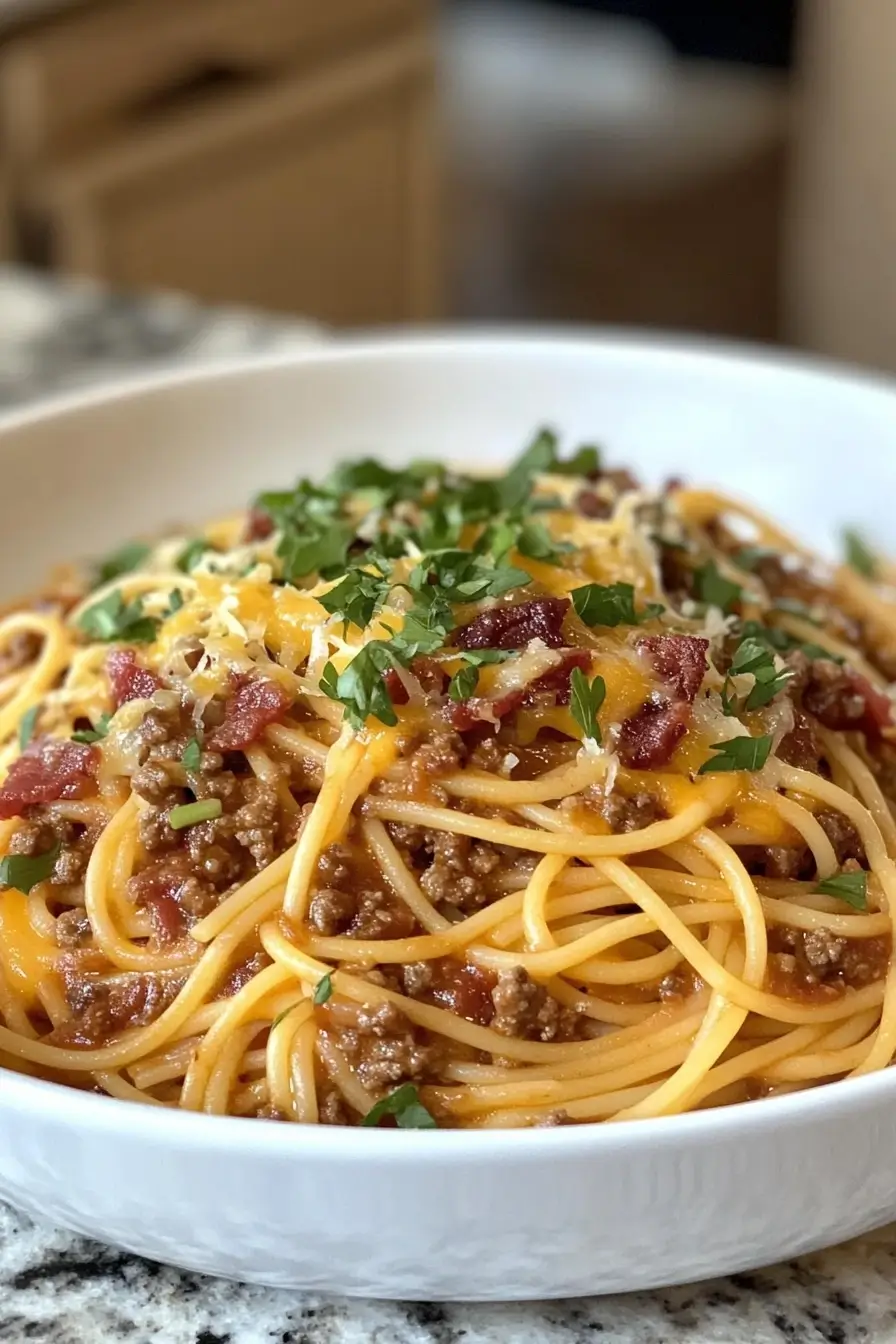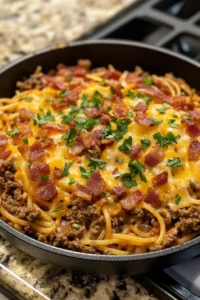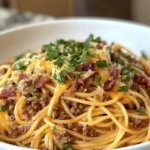Dive into the world of Cowboy Spaghetti, a dish that’s as bold and robust as it sounds. This hearty meal brings a smoky twist to traditional spaghetti, featuring a rich blend of bacon, ground beef, and fire-roasted tomatoes. It’s a perfect choice for those craving a bit of the Wild West at their dinner table. In this guide, we’ll walk you through everything from the essential ingredients and variations to the step-by-step cooking process. So, grab your apron, and let’s rustle up some delicious cowboy pasta!
Overview of Cowboy Spaghetti
Cowboy Spaghetti isn’t just your run-of-the-mill pasta dish; it’s a meaty, smoky marvel that takes the classic spaghetti bolognese and kicks it up a notch. Born from the hearty needs of the American frontier, this dish uses simple yet flavorful ingredients that pack a punch. It’s more than just food; it’s a nod to cowboy culture, offering a taste of rustic American life.
Brief History and Cultural Significance
The origins of Cowboy Spaghetti can be traced back to the chuckwagons of the Old West. Cowboys needed meals that were not only filling but could also be cooked over a campfire. This dish, with its durable ingredients and minimal fuss, fit the bill perfectly. Over time, it has evolved from campfire fare to a beloved family dinner, embodying a spirit of simplicity and satisfaction.
This introduction sets the stage for a deep dive into the ingredients that make Cowboy Spaghetti a standout dish in the next section of our guide. Stay tuned to discover how to bring this flavorful adventure to your kitchen!
Ingredients and Variations
Key Ingredients for Cowboy Spaghetti
Every forkful of Cowboy Spaghetti is packed with flavors that tickle your taste buds. Here’s a rundown of the essential ingredients that bring this dish to life:
- Spaghetti: The backbone of the dish, it provides a perfect canvas for the rich, meaty sauce.
- Olive Oil, Onion, and Garlic: These aromatics lay the foundation, offering a base that enhances the overall flavor complexity.
- Bacon and Ground Beef: No cowboy dish would be complete without a hearty serving of protein. Bacon adds a hint of smokiness, while the ground beef makes the meal satisfyingly robust.
- Fire-Roasted Tomatoes and Tomato Sauce: The fire-roasted tomatoes bring a subtle smokiness, whereas the tomato sauce ties all the components together with its rich and tangy profile.
- Beef Broth: It deepens the meaty flavors, creating a sauce that’s bold and hearty.
- Worcestershire Sauce and Hot Sauce: These elements introduce a kick of heat and a layer of umami, essential for that signature cowboy zing.
- Cheddar Cheese: Melted into the pasta, it offers a gooey texture that makes the dish irresistibly mouthwatering.
- Parsley or Green Onions: A sprinkle of greens adds a fresh contrast to the hearty, meaty flavors.

Recipe Variations
Now, for those who like to lasso up a bit of creativity in the kitchen, here are some twists on the traditional Cowboy Spaghetti recipe:
- Dietary Adjustments: For a gluten-free version, opt for gluten-free pasta. Vegans can swap in plant-based meat and skip the cheese or use a vegan substitute.
- Adding Veggies: Feel free to throw in bell peppers, mushrooms, or spinach to sneak some veggies into this meaty dish.
- Switch Up the Proteins: While bacon and beef are traditional, using ground turkey or even chorizo can offer a new flavor profile to your cowboy cuisine.
- Cheese Varieties: If cheddar isn’t your first choice, try mozzarella for a milder taste or pepper jack for an extra kick.
These variations not only cater to personal tastes and dietary needs but also demonstrate the versatility of Cowboy Spaghetti, making it a suitable dish for any table. Whether you’re feeding a hungry family or entertaining guests, these ingredients and variations provide all you need to make a meal that’s sure to impress. Stay tuned for the step-by-step guide in Part 3, where we’ll show you how to whip up this delightful dish with ease!




3 thoughts on “Cowboy Spaghetti: The Ultimate Comfort Food Guide”